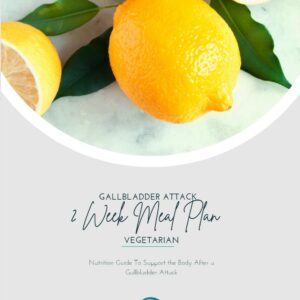Understanding the Link Between Your Menstrual Cycle and Gallbladder Attacks
As women, we’re used to dealing with the ups and downs that come with our fluctuating hormones. Aren’t we lucky!?
But all jokes aside, it’s incredible that roughly 80% of women live with some kind of hormone imbalance.1 And some women don’t even realize it.
Hormone imbalance is a sign of a deeper dysfunction within your body. The good news is that there are ways we can learn to work with our hormones to give ourselves a better shot at feeling our best.
As a gallbladder-focused functional nutritionist, today I want to touch on the topic of hormones as they relate to gallbladder attacks.
I know one too many people whose doctors have told them there’s “no way your gallbladder attacks are linked to your menstrual cycle”. But, gallbladder disease and the symptoms that come with it are highly influenced by hormone levels in our bodies.
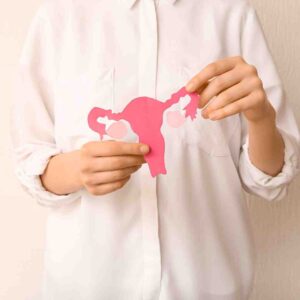
Estrogen is a crucial hormone that regulates a multitude of biological processes.2 It’s the female reproductive sex hormone, with its levels rising and falling twice throughout our roughly 28-day menstrual cycles.
Progesterone is another key hormone that adjusts in tune with our menstrual cycle. These two hormones are especially essential around the ovulation stage of our cycles.
Learning how to balance your estrogen and progesterone can help limit the frequency of your gallbladder attacks around ovulation.
Let’s take a closer look at gallbladder attacks and hormones during your menstrual cycle, then discover the link between the two.
What Is a Gallbladder Attack?
Gallbladder attacks present as uncomfortable and painful symptoms– sometimes lasting several hours.
Common symptoms of a gallbladder attack include:
- Nausea
- Vomiting
- Abdominal pain
- Fever or chills
- Jaundice – or yellowing of the skin/eyes
Anytime you experience the above symptoms of a gallbladder attack, it’s crucial to seek immediate medical attention.
If you’re someone who’s dealt with gallbladder attacks on and off, or sometimes in a consistent pattern, it can be helpful to look at your attacks in relation to your menstrual cycle.
Increased gallbladder pain and attacks throughout the different phases of your menstrual cycle point to the interplay of hormones and gallbladder function.
Women should be in tune with their menstrual cycle because each phase comes with varying hormone levels. Understanding these phases helps you understand more about what’s going on in your body as a whole.
An Overview of the Menstrual Cycle Phases
As women, our bodies go through a roughly 28-day hormone cycle. This is different than men, who experience 24-hour hormone cycles. Women’s hormones fluctuate throughout the whole month in alignment with our menstrual cycle.
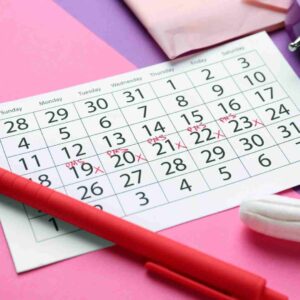
There are 4 phases of the menstrual cycle: the menstrual phase, the follicular phase, the ovulatory phase, and the luteal phase.
Each phase comes with different levels of hormones and changes in the body. Let’s look at each in a little more detail:4
The menstrual phase begins the first day your period starts and usually lasts about 5 days, give or take a few. At this stage, your estrogen and progesterone hormones are at their lowest.
The follicular phase is next– and this is when your body is preparing an egg for fertilization. This 7-10 day stage comes with increasing energy levels compared to the menstrual phase, as estrogen and testosterone levels are starting to increase.
Then we have the ovulatory phase– or ovulation. This lasts about 3-5 days, and it’s when your estrogen and testosterone hormones are reaching their peak levels. Your body is at its peak energy-wise because of this. It’s also of course when your body is most fertile.
Lastly comes the luteal phase, which can last 10-14 days. This is a comedown period between your high-energy ovulation phase and your low-energy menstrual period. At this point, progesterone becomes the dominant hormone while your estrogen levels start to decrease.
Remember that even though painful periods, PMS, fatigue, belly fat, and mood swings are common symptoms during your menstrual cycle, they’re not normal. These symptoms could indicate a hormonal imbalance that’s contributing to your gallbladder issues.
The Link Between Ovulation and Gallbladder Attacks
So why is it that gallbladder attacks around ovulation seem to be the most common?
The high levels of estrogen during this portion of your menstrual cycle could be a primary reason why you experience more gallbladder attacks around ovulation.
Estrogen increases the risk of developing cholesterol gallstones by increasing the secretion of biliary cholesterol. This leads to increased cholesterol saturation of bile.2
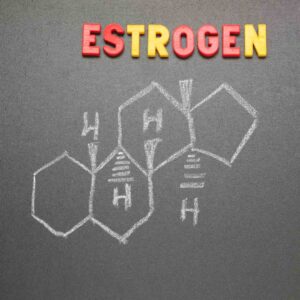
Furthermore, shortly after ovulation, progesterone becomes the dominant hormone. Progesterone affects the bile duct and contraction, and it can impair gallbladder emptying.5
So the surge in estrogen during ovulation can lead to higher cholesterol supersaturation of bile and increasing progesterone can lead to poor gallbladder contraction– both creating a higher risk of gallstone formation and pain.
To summarize, gallbladder attacks around ovulation are commonly due to:
- Increased estrogen levels and increasing progesterone levels
- Increased risk of gallstone formation
- Slowed gallbladder function
- Poor gallbladder contractions
Paying attention to the timing of your menstrual cycle can help you predict when attacks may be worse due to your changing hormone levels at each stage.
Managing Gallbladder Attack Symptoms
Luckily, there are diet and lifestyle adjustments that can help balance your hormones and prevent worsening gallbladder attacks around ovulation.
My number one dietary recommendation is FIBER! Fiber supports the excretion of estrogen through your colon.
Fiber helps flush out your system and keep your bowels moving. The more fiber you take in to support your liver health and colon drainage– the more likely your symptoms are to resolve themselves over time.
For ample insoluble fiber, aim to eat 5 vegetables and 2 fruits daily.
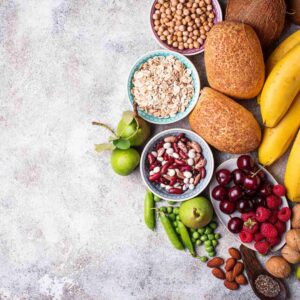
Then with time, slowly increase your soluble fiber intake up to 25 grams daily.
My favorite fiber supplements to add to my diet are:
As always, support your gallbladder with a diet consisting of whole foods, lean proteins, and healthy fats. Avoid processed foods and incorporate low-fat options as much as possible.
Additionally, lifestyle changes to promote gallbladder health include:
- Following a regular exercise regimen– aim for a minimum of 30 minutes 4-5 days a week of moderate exercise.
- Incorporating stress management techniques– try meditation, deep breathing, or journaling.
- Promoting hydration– drink at least 8-10 glasses of water each day.
Following these recommendations not only helps you minimize gallbladder attacks around ovulation– but they also support overall gallbladder health and functioning.
Stay in Control of Your Gallbladder Symptoms
The hormone fluctuations that come with the menstrual period can play a large part in how often you experience gallbladder attacks, with the most common being gallbladder attacks around ovulation.
Now that you know this is the case, track your own menstrual cycle to see if you experience worse gallbladder attacks around ovulation. If you start to see this trend, you can be more empowered as a gallbladder patient knowing exactly how to manage gallbladder attack symptoms during your cycle before they get worse.
If you’re looking for more tips to improve your gallbladder health, reduce pain and attacks, and address the root cause of your gallbladder issues, my Gallbladder Saver Society membership is for you!
This monthly membership is packed with detailed information on all things gallbladder from ME– a functional gallbladder nutritionist.
From education to meal plans and recipes, to live Q&As and more– the Gallbladder Saver Society is your one-stop shop for everything you need to support your gallbladder health.
I can’t wait for you to join me and the hundreds of other gallbladder warriors in the Gallbladder Saver Society– taking CHARGE of their gallbladder health!
In the meantime, I hope you feel more equipped with the tools you need to manage your gallbladder attacks around ovulation– and all throughout your menstrual phase.
Resources:
- Dr. Karen Clark. What’s Causing My Hormone Imbalance? Chapel Hill Hormone Therapy. Aug 30 2023. https://chapelhillhormonetherapy.com/
- whats-causing-my-hormone-imbalance/
- Wang HH, Liu M, Clegg DJ, Portincasa P, Wang DQ. New insights into the molecular mechanisms underlying effects of estrogen on cholesterol gallstone formation. Biochim Biophys Acta. 2009 Nov;1791(11):1037-47. doi: 10.1016/j.bbalip.2009.06.006. Epub 2009 Jul 6. PMID: 19589396; PMCID: PMC2756670.
- Symptoms and Causes of Gallstones. National Institute of Diabetes and Digestive and Kidney Disease. Nov. 2017.https://www.niddk.nih.gov/health-information/
- digestive-diseases/gallstones/symptoms-causes
- Draper, C. F., Duisters, K., Weger, B., Chakrabarti, A., Harms, A. C., Brennan, L., Hankemeier, T., Goulet, L., Konz, T., Martin, F. P., & Moco, S. (2018). Menstrual cycle rhythmicity: Metabolic patterns in healthy women. Scientific Reports, 8(1), 1-15. https://doi.org/10.1038/s41598-018-32647-0
- Tierney, S., Nakeeb, A., Wong, O., Lipsett, P. A., Sostre, S., Pitt, H. A., & Lillemoe, K. D. (1999). Progesterone alters biliary flow dynamics. Annals of Surgery, 229(2), 205-209. https://doi.org/10.1097/00000658-199902000-00007
